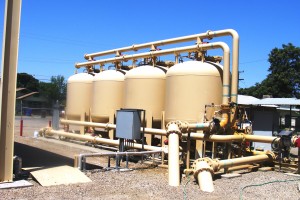
A two-year grassroots effort to engage residents in small South Valley communities regarding drinking water and wastewater issues came to an end with the final meeting of the Kings Basin Disadvantaged Communities Pilot Project Study last month.
The study was conducted by the Kings Basin Water Authority, a regional water agency comprised of more than 50 public, private and non-governmental agencies. The Water Authority received funding from the California Department of Water Resources to investigate and develop solutions for disadvantaged communities that could be integrated into regional water planning efforts for the Kings Basin region. To better understand these problems, an inventory of these communities and the problems they are facing was developed.
“This study has provided us with a much better picture of what constitutes a disadvantaged community in our region and what specific water management issues they are having in their communities,” said Dave Orth, Kings Basin Water Authority board member.
There are more than 100 economically disadvantaged and severely disadvantaged communities within the Kings Basin region, which includes portions of Tulare, Kings and Fresno counties. A disadvantaged community (DAC) is defined by California Water Code as a community with an annual median household income of less than $48,314. A severely disadvantaged community (SDAC) is defined by California Public Resources Code as a community with an annual median household income of less than $36,235. These economically depressed communities represent special districts, schools, mobile home parks, cities, unincorporated communities, assemblage of residences with and without community water systems, and in some cases, communities that are served by private wells and individual septic systems.
A large number of the Kings Basin’s DACs and SDACs currently face critical drinking water and wastewater challenges, but on their own do not possess the necessary technical or financial resources to overcome them. Water quality contaminants in rural communities originate from a variety of sources. Some are naturally occurring, such as arsenic or uranium; other contaminants are related to land use including point source and nonpoint source discharges from industrial, commercial, agriculture and human wastes, usually from septic systems.
The potential solutions are as varied as the contamination sources, and are difficult to standardize across multiple communities due to variables such as geographic location, local hydrologic conditions and chemistry, water system size, water source, governance structure and capacity, and individual preference.
Drawing upon years of experience working with San Joaquin Valley communities, a project team consisting of Provost and Pritchard Consulting Group, Self-Help Enterprises and Community Water Center developed individualized outreach plans to schools, small water systems, and residential areas such as mobile home parks and communities in the study area. Door-to-door outreach and dozens of community meetings were conducted throughout the region.
“Many residents in these rural communities do not use or have access to electronic methods of communications,” said Sue Ruiz, community development specialist with Self-Help Enterprises. “Personal outreach was the most effective way to engage them in the process.”
The study resulted in identifying five potential pilot projects throughout the Kings Basin that provided practical solutions for common problems with DAC drinking and wastewater systems. The projects included economies of scales analysis, community survey, improvements to a wastewater system, water supply improvements and Kings Basin Water Authority membership application support.
“The study allowed those involved to clarify water-related issues impacting their communities, explore potential regional solutions and consider various types of collaboration,” said Maria Herrera, director of community advocacy for Community Water Center.
The outcomes and recommendations from the study will help other integrated regional planning efforts throughout the state to strengthen outreach to, and support of, DACs in their areas with critical water supply and water quality needs.
Community participants ended the last meeting of the study with a discussion on how to maintain the momentum of finding sustainable solutions to some of the most pressing drinking water issues in the region. The residents that participated concluded that the relationships and networks established during the study laid a solid foundation for advancing the work funded by the study. The participants also expressed a strong interest and considered ways to increase DAC participation in the integrated regional planning efforts of the Kings Basin Water Authority.
